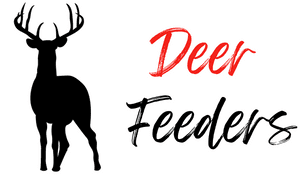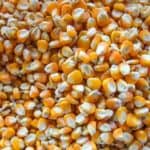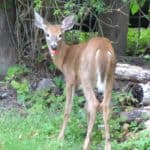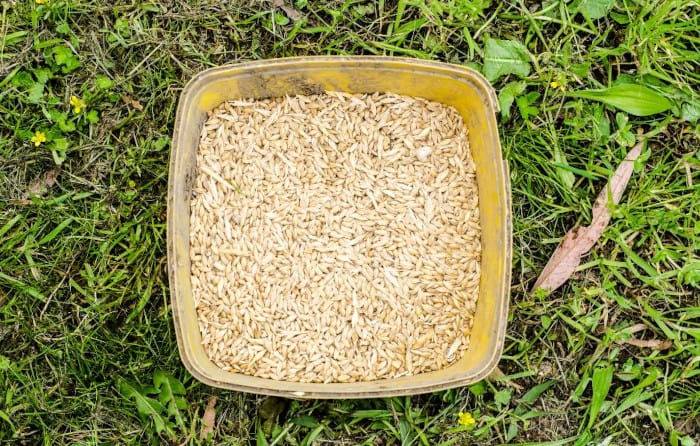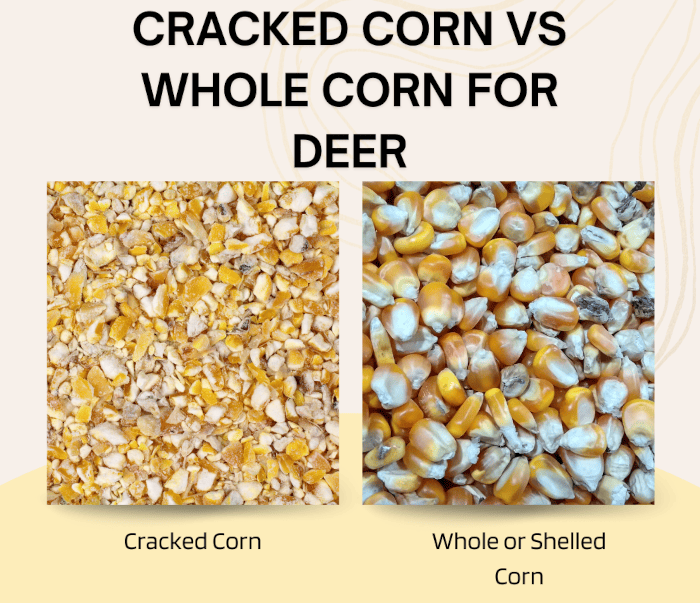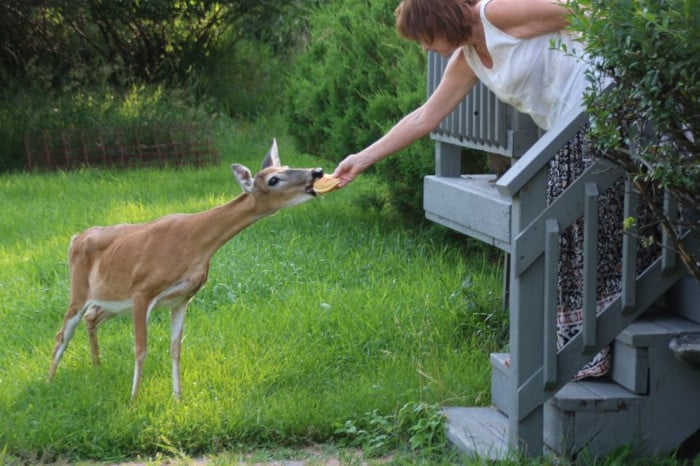A deer feeder is a great way to attract deer, but it can also draw other animal species as well. Unfortunately, some of those animal species can cause some issues at a deer feeder. One of those such animal species is cattle, and if you’ve spent any time deer hunting on a farm that has cattle, you know exactly what I mean. So let’s look at some ways to cow proof a deer feeder.

Just to be clear, when I say “cow” or “cattle,” I’m referring to livestock cattle that are domestically raised for meat, dairy, or other uses.
Also, it’s essential to understand that you can take steps to keep cows away from a deer feeder, but you can’t really make it entirely “cow proof.” A determined cow can bypass or bulldoze almost any preventative measure that you can put in place. So instead of cow proofing the feeder, we are really more focused on making the feeder less desirable, so the cows move on to more accessible food sources.
The Issues with Cattle and Deer Feeders
Depending on the specific species, an adult cow can weigh anywhere between 600 and 3000 pounds and consumes an average of 50 pounds of dry material food or 100 pounds of wet material food per day.
These figures are relative to this post because cows will eat almost any food source that is present in a deer feeder and are especially fond of corn. Their presence at a deer feeder can potentially cause the following issues:
- Consuming the feed meant for deer
- Knocking the deer feeder over or damaging it to get to the feed inside (I’ve seen one or two cows do more damage to a feeder than a single adult black bear)
- Indirectly keep deer away from the feeder
I’ve dealt with the cow at deer feeder issues more than once and tried a few different solutions. Nothing is really foolproof, so some solutions didn’t work at all; some were mildly effective, and others were quite effective.
How to Keep Cows Away from Deer Feeders
Although several different solutions can be used to keep cattle away from a deer feeder, here are the methods that worked best for me:
- Get the feeder off the ground
- Build a fence around the feeder
As I mentioned before, neither option is perfect as neither is a guaranteed solution for dealing with the typical cow/deer feeder issues I outlined above.

Let me discuss each option in greater detail and cover the pros and cons of each:
Get the Feeder off the Ground
This option involves transitioning the deer feeder from its location on the ground up to a position high enough off the ground so cattle can’t reach the feeder. This approach solves the potential issue of cows making physical contact with the feeder but doesn’t solve the problems with cattle consuming all the feed for the deer.
If your main focus is to address the problems with cattle damaging the feeder or knocking it over, this approach may be a viable option. The easiest way to implement this approach is to use a tree to hang the feeder or switch over to a dedicated hanging deer feeder.
If you’re having issues with cattle consuming all the deer feed, then this approach will not help with that problem.
Build a Fence Around the Feeder
At first glance, this potential solution might not make much sense as you’re fencing in the feeder, which could stop deer from getting to it? Yes and no. This approach requires a fence (typically a metal fence) built around the feeder, but the fence height is only so high. It’s tall enough that hogs and cattle cannot jump over it but shorter enough so adult deer can jump over it.
Keep in mind that the average species of feral pig can jump at least 30 inches high, so the most effective fence height seems to be between 35 to 50 inches tall, with one or two strands of barb wire to deter all but the most motivated animals.
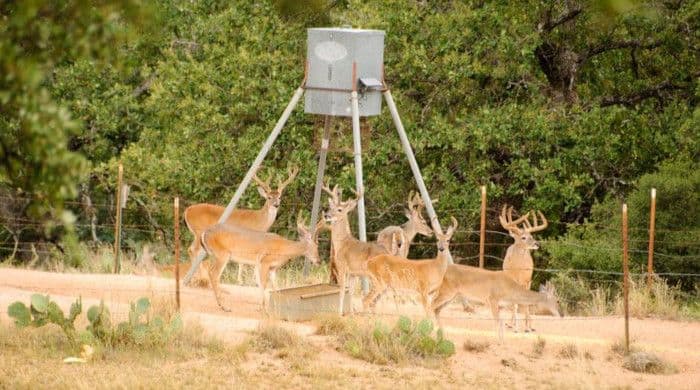
The first fence I ever built around a deer feeder was geared towards wild pigs, and it was only about 25 inches tall. Initially, the hogs dug under it until I pinned the bottom of the fencing to the ground. Once that avenue was taken away, via trail camera, I watched them jump over the fence, eat corn until they were full, then jump back out of the pen area. After some trial and error, I finally figured out a formula that worked.
Hog Panel Fencing
When dealing with cows, I usually start the fencing off using what’s called “hog panel” fencing that is topped off with 2-3 strands of barb wire and mounted to T-posts. Hog panel fencing comes in various heights, but the most popular is 36 inches tall or 42 inches tall. It’s sold in a panel that is either rectangle or square and is ready to install.
I’ve tried a few different post options for the fencing but find that t-posts work the best and stand up to the elements well. Some hunters seem to prefer wood posts, but I find wood posts to be more expensive, harder to bury in the ground, easier for an animal to break, and don’t hold up well long term (at least in my opinion).
With cows, you don’t have to worry about them trying to dig under the fence as they will just push it down if they really want to get in.
If the 36-inch hog panel fencing isn’t high enough for your needs, then use the higher 42-to-46-inch versions. However, even with the taller versions, I would still suggest adding at least one run (if not more) of barb wire on the top as an added barrier.
Cattle Panel Fencing
If the hog panel fencing isn’t working for you, try moving up to dedicated cattle panel fencing. Cattle panel fencing is taller, made with a heavier gauge of wire, and may require a more robust pole for mounting. I also prefer the steel T-post for cattle fencing, but I usually go with a larger T post than the one used for hog panels.
I’ve also seen some hunters use a round steel post (sort of like what you see with a chain-link fence), but a determined cow can still push that over if desired.
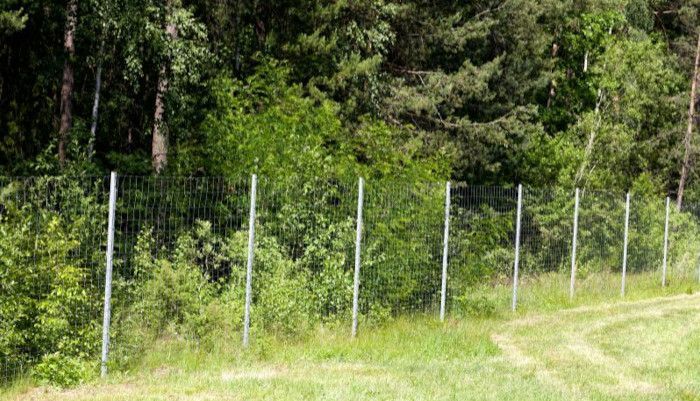
As with hog panel fencing, I still find it beneficial to add 1-2 runs of barb wire across the top of the fence as an added deterrent.
The idea here is to provide a barrier that appears substantial enough to make the cows move on to food sources that are easier to acquire.
One more note about the taller cattle fencing: while adult deer will have no trouble jumping the fence, fawns may not be able to clear it.
Size of the Fenced in Area Matters
Here’s something else to be aware of with fenced in deer feeders, consider building the fence around the feeder with enough area to accomplish two goals:
- Several deer can come in and feed at one time without being on top of each other.
- Build it large enough, so that feed dispensed from the feeder gets no closer than 10 feet to the edge of the fencing.
If you make the fenced-in area so small that only one or two deer can enter at a time, deer coming to the feeder may opt to leave as there isn’t sufficient space inside for them to feel comfortable feeding.
If the fenced-in area is small enough that deer feed ends up being close to the fence, a cow may see or smell the feed, and it might be just enough motivation to drive them to start testing the sturdiness of the fence. But, of course, that won’t last long as the fence will give way when pushed by a motivated cow after corn. In my experience, once the cattle see that the fence can be pushed over, they will be more inclined to push it over again if the fence is replaced.
I learned that lesson the hard way as I watched some cows on a trail camera eyeing deer corn that was about 3 feet from my fence line around the feeder. Finally, after staring at and smelling the corn that was just out of her reach for 30 minutes or so, a brave cow decided to lean into the fence a bit. She was rewarded when it folded over under her weight.
I suggest removing that temptation by making the fencing around the feeder at least 3X the size of the distance that the feeder throws feed. So, if your feeder throws feed or corn 10 feet from the feeder, then I’d plan to make my fenced-in area a minimum of 30 feet around the feeder.
FAQS
Here are a few other questions that are frequently asked in association with cattle proofing a deer feeder:
Do cows keep deer away?
Typically speaking, deer don’t seem to mind cattle being in an area, but they usually give each other a bit of space. Now, at a deer feeder, it can be a different story as several cows milling around a deer feeder can be enough to scare deer away from the feeder until the cows move away.
Will hog panels keep cows out of a deer feeder?
Hog panel fencing can be an effective deterrent in keeping cattle out of a deer feeder. However, a cow or group of livestock can quickly push over hog fencing if they are sufficiently motivated to access the deer feed. A cow’s level of motivation to feed is tied to the availability of other food sources and how well they are feed and maintained by the farmer.
How do you keep cows out of deer food plots?
Keeping cattle out of a deer plot can be a more significant challenge than keeping cows away from a deer feeder because most food plots cover a large area. The only available deterrent to keeping cows out of a food plot is some form of fencing around the plot that is tall enough so a cow can’t jump over it. However, that approach may not make sense considering the amount of work involved and the potential cost of fencing in that large area.
How high should a fence be around a deer feeder?
To deter feral pigs and cattle, a fence around a deer feeder should be a minimum of 36 inches tall since most species of wild pig can jump at least 30 inches off the ground.
